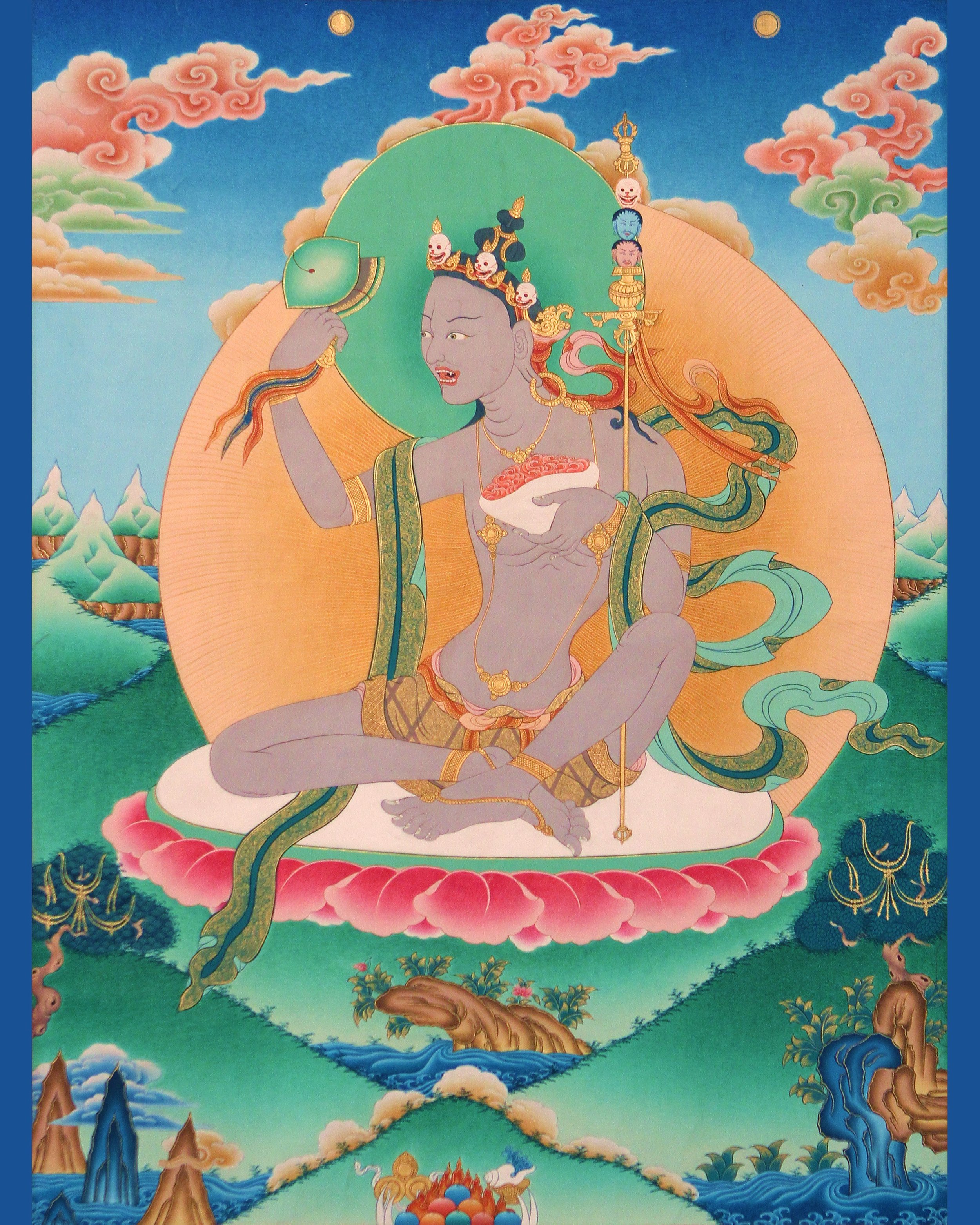Niguma
Excerpted from Timeless Rapture, by Ngawang Zangpo:
In the Shangpa tradition’s collections of the early masters’ life stories, Kunga Ö’s Biography of the Wisdom Dakini Niguma covers a mere six pages, most of which amount to verses of praise. Only the following words are pertinent to her life:
This wisdom dakini was born the daughter of the great Brahmin Shantivarma [Zhiwé Gocha] and the Brahmini Shrimati [Palgyi Lodrö]. Her name was Shrijnana [Palgyi Yéshé]. She was pandit Naropa’s sister and a member of the Brahmin caste. During three previous incalculable eons of time, she actualized her training on the spiritual path.
In the continuity of that path, during this lifetime she received a little instruction from a few accomplished spiritual masters and, based on their teaching, directly saw the truth of the nature of reality. Her illusory body of obscuring emotions appeared as a pure body of enlightenment. Having reached awakening’s three pure stages, she actually met the great Buddha Vajra Bearer [Dorje Chang, Tib, Vajradhara. Sanskrit] and received from him the full four empowerments of Great Way tantra within an emanated sacred circle of deities.
The wisdom of her understanding of every sacred teaching, such as Buddha’s discourses and tantras, profound instructions, and treatises, flowered to include direct [knowledge and sight] of the nature and multiplicity of all phenomena. She reached awakening’s tenth stage, Cloud of the Doctrine.
Her obscurations of knowledge became finer and finer until no veils remained; she became one with enlightenment, an epitome of the three bodies of enlightenment. She reached perfection in renunciation and realization, the achievement of her own goal. Her enlightenment’s two form bodies appear for the benefit of others until the end of existence and bring benefit to beings in ways that can purposefully guide them. In åparticular, she watches over those who preserve her lineage with a compassion that knows no distance; she blesses them and ensures the success of their enlightened activity.
The Collection of Shangpa Masters’ Biographies, pp. 40-42

